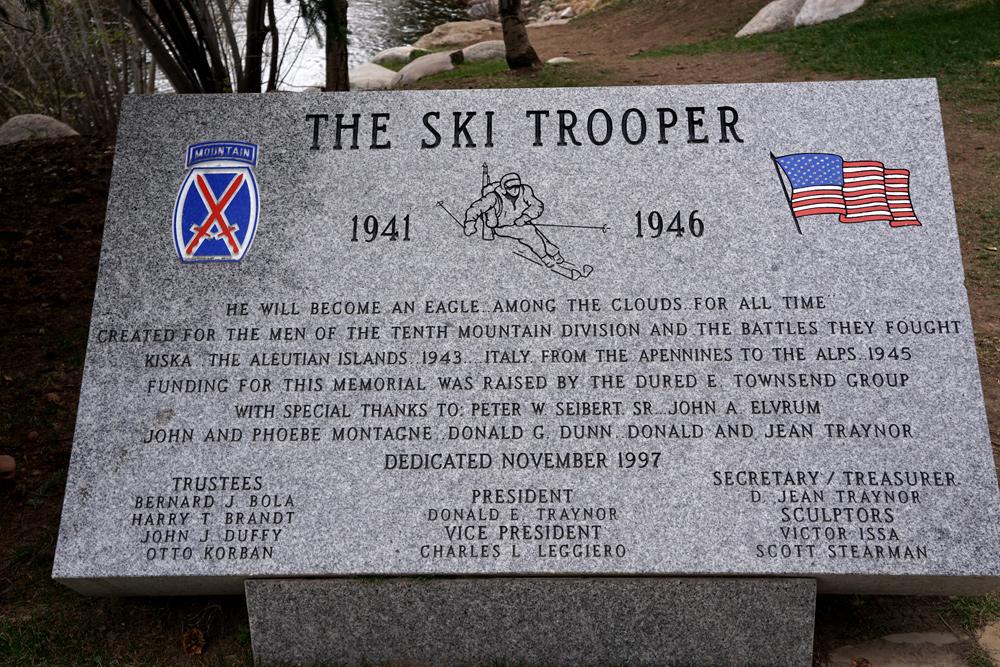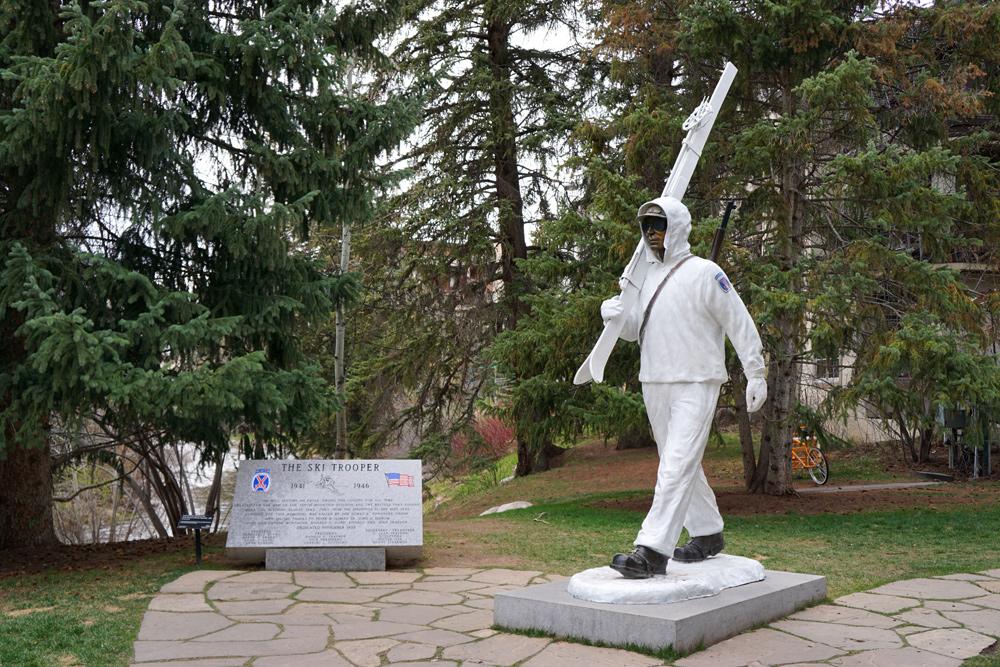The Tenth Mountain Division
Full Article
The Tenth Mountain Division (hereafter, the Tenth), was US Army division created in 1941. The Allies took notice of a Finnish division of soldiers on skis that defeated and embarrassed a larger and better-equipped invading Soviet force during the Winter War of 1939. Inspired by Finland’s success, Charles Minot Dole, the president of the National Ski Patrol, spoke to Army Chief of Staff George C. Marshall about creating a mountaineering division.
After Marshall witnessed Greek mountain troops holding off a larger Italian force in the Albanian mountains, the first victory against Axis forces in World War II, he was convinced that the US Army needed the mountaineering division that Dole had recommended. With Marshall’s approval, the Tenth Mountain Division was formed. Its motto is “Climb to Glory.”
Training began in the Rocky Mountains with the Eighty-Seventh Infantry Regiment. Army recruiters formed this regiment by recruiting from top ski schools around the country, reasoning that it made more sense to recruit experienced skiers and give them combat training than to teach trained soldiers how to ski. Training on mountains such as Mt. Rainier, the Eighty-Seventh spent weeks practicing fighting tactics, survival techniques, and other skills needed to become an effective fighting force.
Role in World War II
In 1942, Camp Hale was formed about thirty miles south of Vail, between Leadville and Red Cliff as a dedicated training space for the Tenth. Here, recruits trained at Cooper Hill with ski coaches from around the country. The high altitude made for tough training, and because the area was so isolated, there were few opportunities for recreational activities. After a long winter of strenuous training, the soldiers had gained a wide array of mountaineering skills, and in August 1943 they received their first mission: an Allied assault on the Aleutian Island of Kiska. But Japanese forces had abandoned the island before the Tenth arrived. The unit suffered eleven casualties due to friendly fire, which prompted army officials to consider disbanding it. They ultimately decided to preserve the force for future assignments.
Following two more years of training, the Tenth finally got a shot at redemption in the winter of 1944–45. Its mission was to break through the German defensive line that spanned Italy’s Apennine Mountains—the seemingly impenetrable Gothic Line. The Germans were entrenched high up on ridges to prevent Allied forces from advancing into Europe. From their vantage points the Germans could see Allied attacks in advance, which gave them plenty of time to set up defenses and fortifications. Breaking the Gothic Line was the perfect task for the Tenth.
The mission was daunting to say the least, as soldiers from the Tenth had to silently ascend the cliff face of Riva Ridge at night with heavy packs full of ammunition and equipment. A single loud noise could alert the German troops, who could easily eliminate the exposed Americans as they climbed. The Tenth successfully captured Riva Ridge on February 19, allowing Allied forces to break through German defenses in the mountains and push further into Europe. The victory at Riva Ridge gained the Tenth international fame.
Post–World War II
 Upon their return from the war, members of the Tenth began forming ski clubs all over the country. In Colorado, Tenth Mountain Division veterans established ski resorts in Vail and Ski Cooper; on the East Coast, they established ski areas. The system of backcountry lodges and outposts near Camp Hale have also become popular overnight destinations for winter travelers.
Upon their return from the war, members of the Tenth began forming ski clubs all over the country. In Colorado, Tenth Mountain Division veterans established ski resorts in Vail and Ski Cooper; on the East Coast, they established ski areas. The system of backcountry lodges and outposts near Camp Hale have also become popular overnight destinations for winter travelers.
During the 1980s Fritz Benedict, a Tenth Mountain Division veteran, and other skiers from Aspen formed the Tenth Mountain Division Hut Association, a nonprofit organization that honored the division by building a series of recreational mountain huts in its name. The first of these huts, many of which are located in the Elk Mountains near Aspen, was completed in 1982. Today more than a dozen of these huts dot public and private lands throughout Colorado’s mountain backcountry, and they serve as fully furnished recreational retreats accessible year-round via hiking, skiing, and snowshoe trails.
Since World War II, the Tenth has been deactivated then reactivated, in 1985. The division has participated in combat in diverse areas, such as Somalia, Afghanistan, and Kosovo. It has also assisted in relief efforts abroad and at home, such as constructing temporary camps and homes following the catastrophic Hurricane Andrew. The Tenth’s specialized training and skilled soldiers have made it an important part of America’s military. The Tenth is not an exclusively mountaineering and skiing division but rather a unit trained specifically to fight in harsh terrain.


















